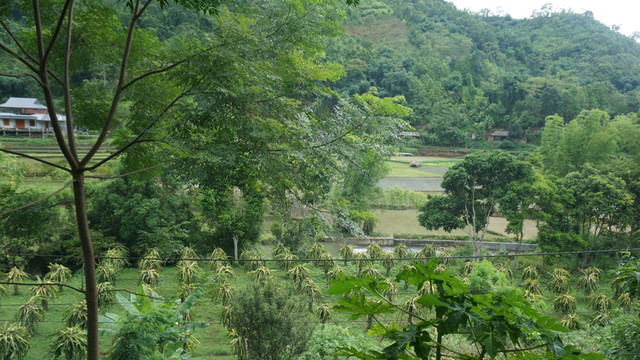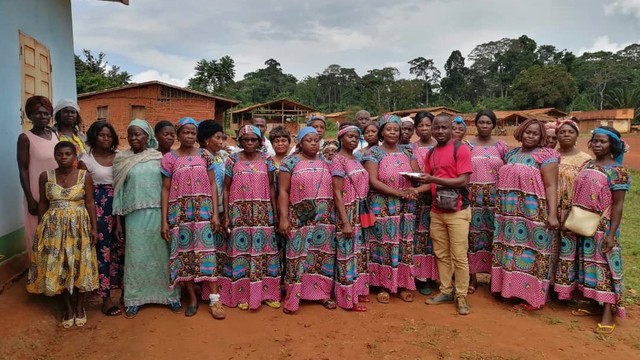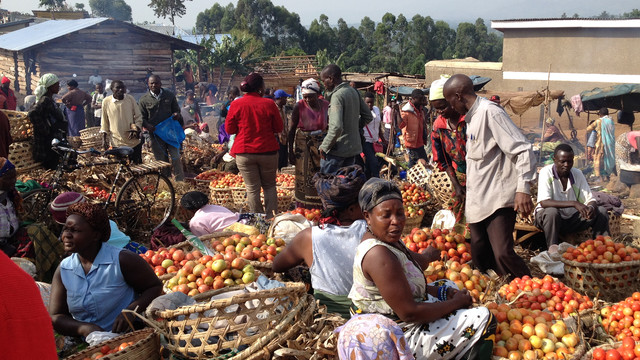The Paris Agreement – a framework for local inclusion
The Paris Agreement commits governments to climate action. To deliver this agenda successfully, they must engage with all sectors of society, including indigenous peoples, and recognise traditional knowledge.


Sorting apricots in Tajikistan. The diverse and extreme climatic conditions of Central Asia helped farmers develop fruit varieties adaptable to drought and other environmental stresses (Photo: UNDP, Creative Commons via Flickr)
The global agreement on climate change reached in Paris sets out a clear agenda for national-level action to reduce greenhouse gas emissions and take steps to adapt to climate change.
Many countries have already submitted national climate action plans (Intended Nationally Determined Contributions), and these plans provide a link from the global level down to local action. But if the Paris Agreement is to deliver results, all sectors of society must be engaged in this process.
The legally binding agreement promotes local inclusion in two ways. Firstly, it recognises the need to involve vulnerable communities and use traditional and local knowledge in adaptation. According to Article 7, adaptation action should:
- Follow a "participatory and fully transparent approach, taking into consideration vulnerable groups, communities and ecosystems", and
- "Be based on and guided by the best available science and, as appropriate, traditional knowledge, knowledge of indigenous peoples and local knowledge systems".
Vulnerable communities – whether in urban slums, drylands, mountains or coastal areas – are often highly knowledgeable about what adaptation actions are needed, but lack the resources, power or rights to implement them.
Such communities can also play a key role in mitigation because of their low carbon lifestyles and stewardship of forests and other ecosystems.
Secondly, the agreement acknowledges that parties should "respect, promote and consider" the rights of indigenous peoples and local communities and human rights obligations when taking action to address climate change (preamble).
Indigenous peoples are among the most vulnerable to climate change because they depend closely on natural resources. Yet their traditional livelihoods are often highly resilient and adaptive. Having secure rights to the traditional lands and natural resources needed to sustain traditional livelihoods is therefore vital for survival in a changing climate.
Where traditional beats modern
Securing indigenous and local community rights is not only a safeguard for the most vulnerable, but an important adaptation action in itself.
Unlike modern farming, traditional farming methods sustain a high diversity of genetic resources which are evolving in response to climate change. This provides the genetic basis for future adaptation and food security both locally and nationally, while also having lower greenhouse gas emissions.
Traditional systems can be as productive as modern farming systems, when the productivity of the whole system is factored in (not just crops) and yields are considered over time. They also sustain vital ecosystem services such as water, and healthy soil, and provide more nutritious diets.
Crop yields can be sustainably increased through 'participatory plant breeding' while incomes can be significantly increased through direct links to urban consumers, as experience in China shows.
The COP21 decision, of which the Paris Agreement is part, also recognises the role of local and indigenous knowledge in adaptation and mitigation. It recognises the need to: "strengthen knowledge, technologies, practices and efforts of local communities and indigenous peoples related to addressing and responding to climate change; and establishes a platform for the exchange of experiences and sharing of best practices on mitigation and adaptation in a holistic and integrated manner".
For vulnerable communities, exchange of local and traditional knowledge and best practices with other communities is as important for adaptation as scientific knowledge.
In September 2015, representatives of 21 indigenous mountain communities in 10 countries took part in the second meeting of the International Network of Mountain Indigenous Peoples in Tajikistan to exchange knowledge about climate change impacts and adaptation responses.
The workshop highlighted the critical role that biocultural heritage is playing in adaptation – in particular, traditional knowledge, biodiversity, ecosystem-rich landscapes, and the cultural and spiritual values that sustain them. In the Jafr community of Tajikistan, local fruit trees can survive the increasingly hot and dry conditions but modern varieties cannot, while in Tuggoz, local wheat varieties produce higher yields than modern varieties.
This means that it is important that local and indigenous communities are engaged in national and sub-national climate change planning processes to link the global climate agreement with local action. By doing so, governments can harness a wealth of local action to support and enhance national targets for mitigation and adaptation.
As a first step, they need to recognise that communities are not only highly vulnerable to climate change but also highly knowledgeable about its impacts and about effective strategies for adaptation and mitigation.
Governments can also enrich their climate reporting, assessment, research and decision-making processes by using indigenous and local knowledge as well as scientific knowledge. This has already been recognised by the Biodiversity Convention which is encouraging the use of traditional knowledge for monitoring progress with implementing its targets through a "multiple evidence-based approach”.
To date, national climate processes in developing countries have often engaged scientists and technical experts. The Paris Agreement brings a clear obligation on parties to establish participatory processes that include vulnerable groups and communities, traditional knowledge holders and indigenous peoples.
Krystyna Swiderska (krystyna.swiderska@iied.org) is the principal researcher (agriculture and biodiversity) in IIED’s Natural Resources Group.
For more information, see www.bioculturalheritage.org.


